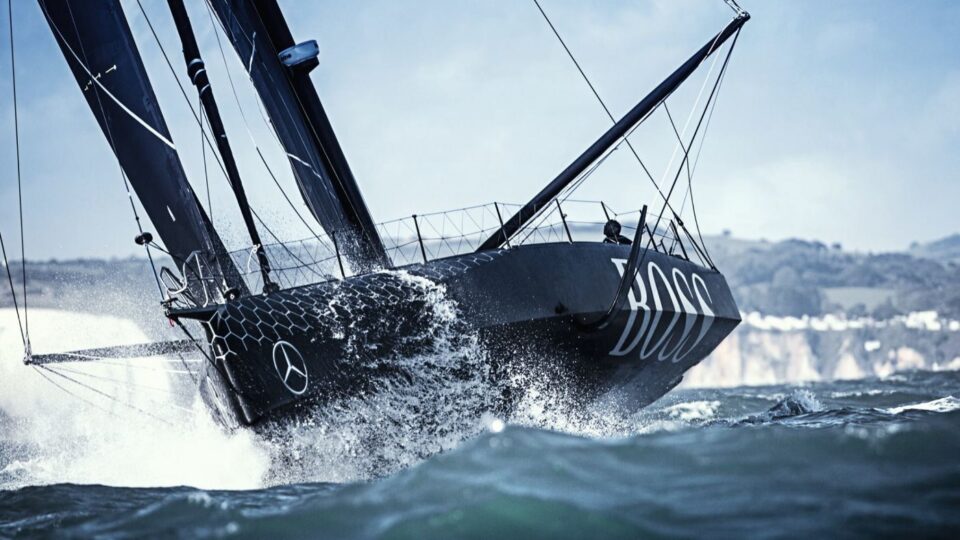Why Do Sailboats Lean?
Imagine a calm ocean scene where a sailboat tilts gracefully to one side, its sails billowing with power and grace. This iconic pose isn’t just for show; it’s a fundamental aspect of sailing. Sailboat leaning, a phenomenon often referred to as “heeling,” is a defining characteristic of the sailing experience. The sight of a sailboat gracefully tilting to one side, its sails billowing, is iconic and poetic. But Why Do Sailboats Lean? The answer lies in the intricate interplay between the forces of nature and the design of the sailboat. Let’s delve deeper.
Balancing Forces
At the heart of heeling lies the delicate interplay of multiple forces. Two key players dominate this intricate dance: the wind pushing against the sails and the counteracting forces provided by the sailboat itself, especially its keel.
Wind’s Dual Role
Wind is the primary mover of sailboats. However, it doesn’t merely propel the boat forward. Depending on the boat’s direction relative to the wind, the sails capture and redirect wind energy. This creates both a forward driving force and a sideways push. This sideways component is what first prompts the boat to lean over.
The Keel’s Counteraction
Beneath the waterline of most sailboats is a structure called a keel. The keel is typically heavy, extending deep into the water. As the wind tries to tilt the boat sideways, the keel acts as a counterbalance. It utilizes its weight and the buoyant force from the water it displaces to resist the tipping motion. This results in the boat leaning rather than capsizing.
Also Read: Can Sailboats Tip Over?
The Advantage of the Lean
Though heeling might seem like a challenge to sailing, moderate heeling is often beneficial. When a sailboat leans, the shape of its submerged hull changes. For many boats, this heeled shape cuts through water with reduced resistance, potentially increasing speed. Additionally, the tilted sails might interact with the wind more effectively than when upright, further enhancing propulsion.
Sail Design and Lift
Sail design plays a pivotal role in the leaning dynamic. When wind flows across the curved surface of a sail, it behaves similarly to air flowing over an airplane wing, generating lift. While this lift propels the boat forward, it also exacerbates the heeling force due to the upward motion being translated into a sideways one, depending on the boat’s angle to the wind.
Role of the Sailor
While nature offers the forces, sailors have the reins. Sailors adjust the sails’ trim, change course, or even reef the sails (reducing their surface area) to manage the degree of heeling. Techniques and strategies vary depending on wind strength and the desired direction. For instance, in high winds, a sailor might let out the sails slightly, allowing some wind to spill out, reducing heeling forces. Sailors thus continually negotiate with the wind to balance speed and stability.
Beyond the Tipping Point
All leaning isn’t good. Excessive heeling can be detrimental to the boat’s performance and can also pose safety risks. If a boat tilts too far, it can capsize, turning over completely. Sailboats are designed with heeling thresholds in mind. The boat’s hull shape, the weight and depth of its keel, and sail configuration all contribute to its resilience against excessive heeling. Modern sailboats, especially those designed for racing, may heel dramatically but also have features that prevent full capsizing in most situations.
A Timeless Ballet
To the external observer, sailing can appear as a serene dance across the water. But onboard, there’s a dynamic interaction of wind, water, physics, and skill. The leaning of a sailboat isn’t a random event but a testament to the balancing act sailors have honed over millennia.
Also Read: Is Sailing Hard?
Why Do Sailboats Lean? – Conclusion
In essence, the leaning of sailboats, or heeling, is a dance between the boat and nature. It’s a balance of forces, an art of physics, and a testament to human engineering and skill. Far from being a mere side effect of sailing, it’s integral to the sport and craft. As one delves deeper into the world of sailing, understanding why sailboats lean becomes the gateway to appreciating the nuanced interplay that makes sailing the timeless pursuit it is.
